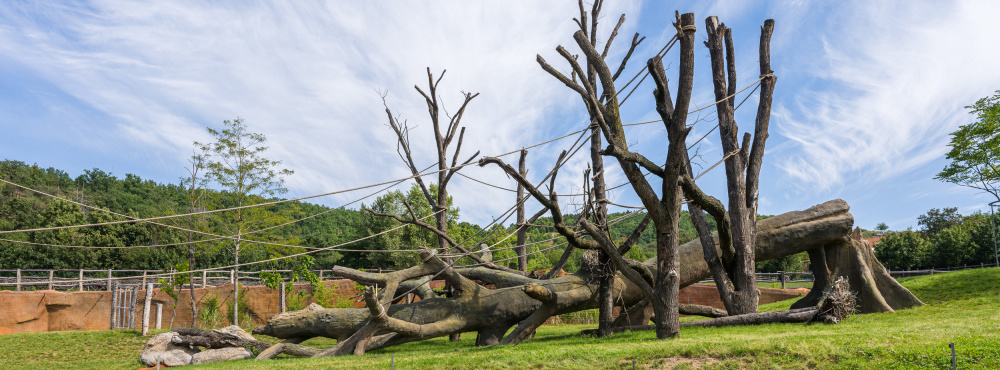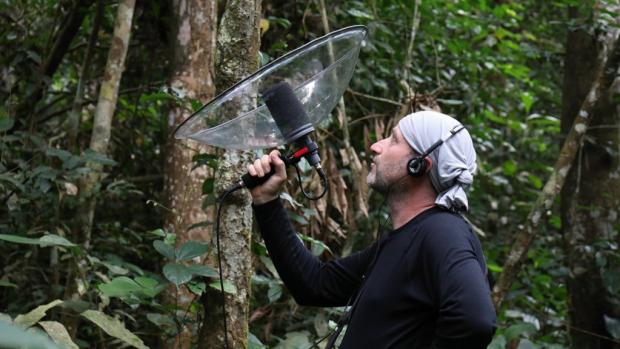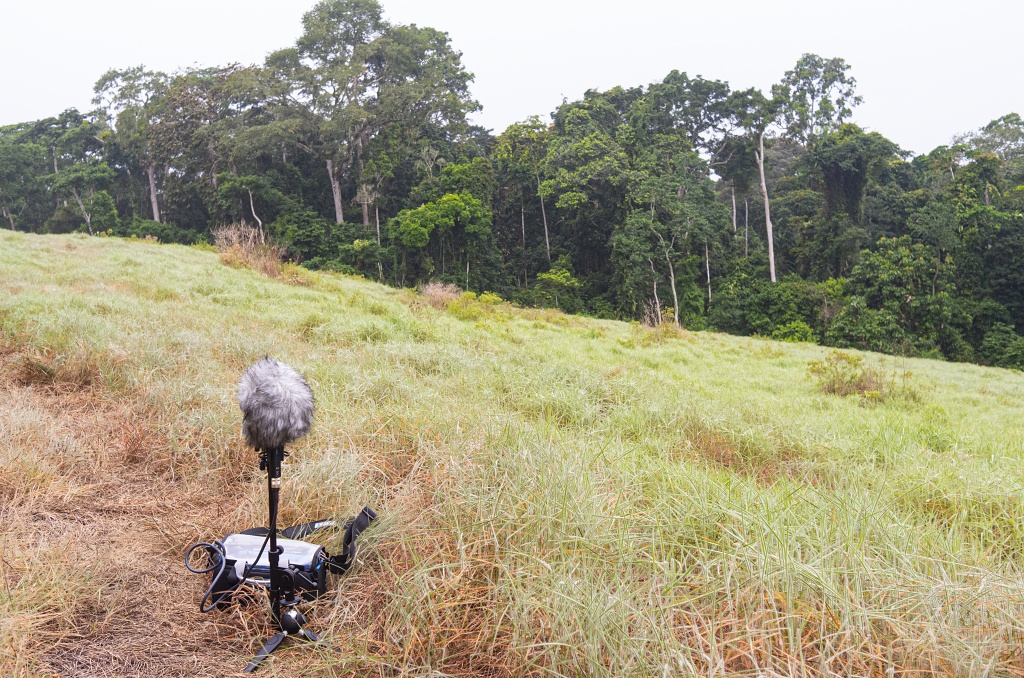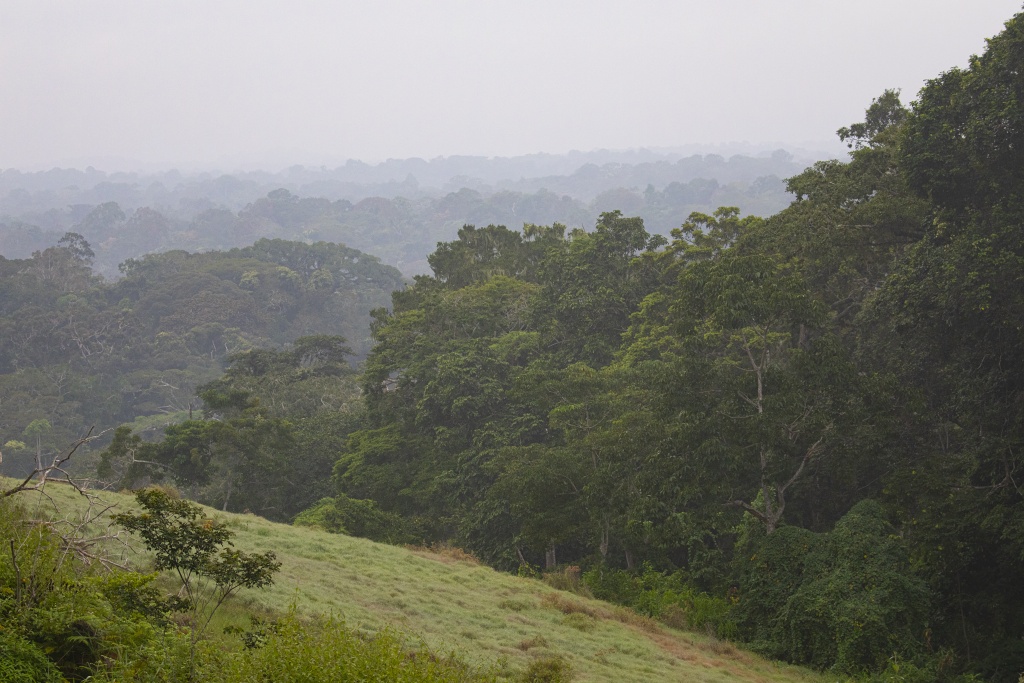Sounds

 During a multi-day expedition to Cameroon, Assoc. Prof. Michal Rataj made authentic recordings of rainforest sounds for the Prague Zoo’s Dja Reserve. Photo: Miroslav Bobek, Prague Zoo
During a multi-day expedition to Cameroon, Assoc. Prof. Michal Rataj made authentic recordings of rainforest sounds for the Prague Zoo’s Dja Reserve. Photo: Miroslav Bobek, Prague Zoo
Faithful illusions of the tropical rainforest in Prague’s Dja Reserve are enhanced by spatial soundscapes: the rustle of birds’ wings, the crash of falling trees, and the sonic carpets woven by cicadas.
Sounds of the rainforest
One of the pavilion’s most remarkable features is its impeccable sound system with real sounds of the forest recorded directly in Africa—allowing visitors to experience a small part of Cameroon not only visually but also acoustically. The recordings were captured by the composer, educator, and radio producer Assoc. Prog. Michal Rataj, deep in the heart of the Dja Biosphere Reserve. He made field recordings while staying at a base camp in the forest, on an excursion to a clearing at Bouamir, and on the way back to the town of Somalomo.
The materials were recorded using a special 3D microphone (which captures sound in a full 360 degrees) and a parabolic microphone—a kind of “sound gun” that can pick up a very specific sound with precision, much like a camera zooming in on a distant object.

Assoc. Prof. Michal Rataj’s task was to capture the rainforest’s atmosphere using different microphones so that it could be faithfully recreated in the Dja Reserve pavilion in Prague. Photo: Miroslav Bobek, Prague Zoo
The captured sounds didn’t include just the glorious singing of the ever-present birds, with as many as 36 different species identified on the sound recordings; there were also sounds of forest termites, the rustling of birds’ wings, the cracking and crashing of trees, insects of all kinds, and especially the mesmerising sonic carpets created by cicadas, which throb like at a rock concert or form an impenetrable wall of white noise.
There was also room for capturing the singing of local guides, who left behind lovely memento in the form of a short lullaby.
The sound installation was put together with the help of Michal Rataj’s students from the Academy of Performing Arts in Prague: Tomáš Borl, Michael Burt, Štěpán Hon, Tobiáš Horváth, Kryštof Ježek, Patrik Kako, Anna Kolářová, and Ondřej Rozum.

When you enter the Prague Zoo’s Dja Reserve, you can allow yourself to be transported to the tropics with your eyes closed—simply by listening. Pictured: Bouamir clearance in the Dja Biosphere Reserve, one of the places where the sound recordings were made. Photo: Miroslav Bobek, Prague Zoo
The other areas of the pavilion—the African classroom, the souvenir shop and the seating area in front of the main exhibit—are also sonically enhanced.
Sounds from the exhibits
The exhibits in the Dja Reserve are separated from the visitor areas by perfectly soundproofed panes of laminated glass more than four centimetres thick. However, it would be a pity for visitors to miss out on the animals’ acoustic displays, so sound from inside the exhibits is transmitted to visitors through microphones and speakers mounted overhead.
To ensure acoustic comfort in the visitor area, sound-absorbing cladding on the ceiling prevents echo. The overhead speakers can also be used for narrated feeding sessions or presentations.
ZOOPRAHA.CZ
Contacts
- The Prague zoological garden
U Trojskeho zamku 120/3
171 00 Praha 7
Phone.: (+420) 296 112 230 (public relations department)
e-mail: zoopraha@zoopraha.cz
Others










